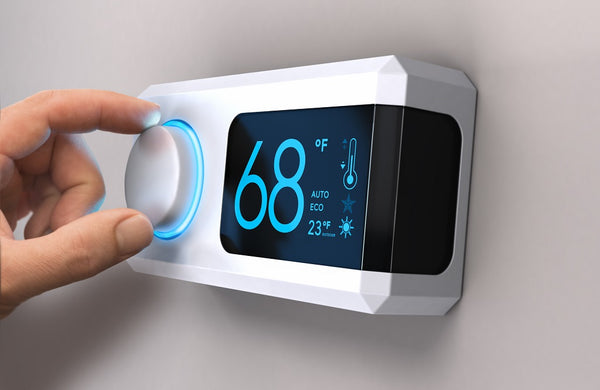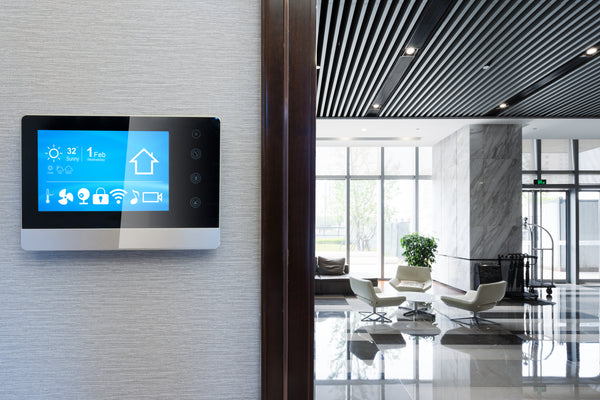A well-functioning thermostat is essential for many households. But then a thermostat malfunctions, it can significantly impact the comfort of the people who live inside that home. Even minor thermostat problems can directly impact the performance of the household's heating and cooling systems.

Check If It’s Really Broken
If your thermostat is not working properly, don't immediately assume that it is broken. Thermostat troubleshooting is not difficult and won’t take you forever. However, you can save time and effort by looking for the following problems before starting to consider getting rid of your unit.
It’s in a bad location
If your thermostat won't change temperature, chances are the device is placed at a bad location.
Your thermostat needs to be away from any heat sources including sunlight because heat will cause your thermostat's reading to be inaccurate and will send wrong commands to your furnace or air conditioner.
You should also make sure that your thermostat is not in a room that has an open window or outside door in it because like heat, drafts will also cause inaccurate readings. The most ideal place to place your thermostat is on an interior wall towards the center of your home that is normally closed. This is the best way to ensure that your thermostat is getting accurate readings.
It needs cleaning
Thermostats, like any other device, need attention. If your thermostat hasn't been cleaned out in a while then a good dusting with a soft brush might be just what it needs. This is because dirt and dust will cause inaccurate temperature readings so occasional dusting is recommended.
To clean your device, remove the cover and lightly dust the inside of the thermostat including the metal coils and contact plates. Contact plates are a little tricky to clean because brushes can't fit in between them. The only way to clean them is to slip a piece of paper in between and slide the paper back and forth.When cleaning your thermostat always remember to use a soft brush and be gentle with your strokes so you won’t damage any wirings inside the unit.

The anticipator needs adjustment
If your heating and cooling system cycles start and stop too frequently or not frequently enough, then you might need to adjust the anticipator of your thermostat.
A heat anticipator is an electrical resistor device mounted in the center of many mechanical thermostats. It is responsible for turning off the furnace burners by anticipating the flywheel effect of a space heating up. To adjust the anticipator, remove the cover of your thermostat and look for a flat metal pointer on a scale.Wait a couple of hours to see if the system has adjusted itself after making the small adjustments. If you still feel as though your anticipator needs to be adjusted, make the changes one calibration mark at a time.
It needs new batteries
Most thermostats are battery operated but most of them have a low-power indicator that lights up when the device is running low on battery. Just replace the old batteries with new ones when this happens.

How to fix a thermostat: common problems and solutions
At this point, you have already checked your thermostat's location, gave it a good dusting, adjusted the anticipator and replaced the old batteries but somehow, your device still doesn't work properly. Here are the most common thermostat problems as well as their solutions that might help you avoid an unnecessary service call.
No heat from the furnace
There's a couple of potential causes if your thermostat is failing to control your heating system and these include a tripped breaker or a loose connection.
To check the breaker, go to your circuit breaker box and look for the breaker that powers the furnace. If the breakers are tripped, turn them back on. To check for loose wire connections, remove the cover of your thermostat and check all the wire terminals. Make sure that the wires are all connected properly and no wires are loose. If you don’t feel comfortable doing this, contact a professional.
Programming problems
Most people own programmable thermostats and the biggest problem with these types of thermostats is their programming chips. These chips lose their programming whenever there is an abrupt power failure. Unfortunately, there is no fix for this. You reprogram the chip but it will still lose its programming whenever there is an abrupt power outage.
Heating doesn’t heat and your cooling doesn’t cool
A lot of homeowners don't pay attention to their thermostat unless they are adjusting the temperature so it's easy to forget that we need to set the thermostat for “Heat” or “Cool” when seasons begin to change. When your thermostat is not heating or cooling your home properly, you might have forgotten to set your system to the “Heat” or “Cool” setting.

Rebooting Your System
Take note that the following tips are only for those who have experience with electrical wirings to avoid any accidents. If you don’t have prior experience in working with wires and breakers then it’s best to skip this step and contact a professional.
Set your thermostat to “heat,” but turn the temperature setting down to about 60 degrees. This is to prevent any signals from your thermostat from turning on your furnace. If the furnace is still running, keep lowering the temperature setting until it turns off.
Go to your breaker panel and turn off the power to your heating system. Leave it off for about 30 seconds to one minute and then turn the power on. This reboot will usually get your heat back on.
Replacing your Thermostat
If you have done all of the things stated above but your thermostat is still not working properly, then you need to call an expert to help you fix your problem or you need to replace your old thermostat. Replacing your old unit will most likely increase your thermostat's efficiency since older thermostat models use up a lot of energy instead of saving it.
Check out Blackhawk Supply if you are looking for a great thermostat or you need other HVAC supplies.


